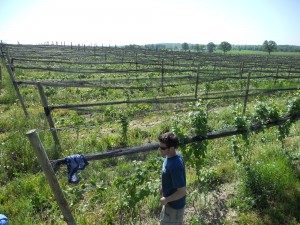Gary Barletta, co-owner and winemaker at Long Point Winery in Aurora, NY, has been a familiar face in the Finger Lakes Wine Industry for many years. Barletta grew up in an Italian neighborhood in Syracuse, NY where his grandfather introduced him to the art of winemaking. In 1976, Gary began making his own wine from an old press in his grandfather’s basement. Gary and his wife Rosemary then turned their passion into a profession in 1999 by establishing Long Point Winery on a beautifully scenic plot of land on the east side of Cayuga Lake. Since it’s establishment, Long Point Winery has won many awards for their high quality wines.
Q1: Is winemaking an art or science?
It’s an art. If it were a science then every vintage would come out tasting the same. Of course there is a lot of science involved, but it (winemaking) would be much more standardized if it were just a science. Instead, you have to give it your own touch and adjust it according to taste, and that’s the bottom line: how it tastes. So in that sense, it’s much more of an art.
Q2: What are the biggest challenges facing the Finger Lakes wine industry?
For this area the biggest challenge is marketing and marketing properly. For years we (Finger Lakes) have been known for our Concords and Catawbas. But in the last 30 years, we’ve been growing some really nice viniferas and showing the world that we can produce high quality vinifera wines.
Q3: What is your winemaking philosophy?
My philosophy is to try to make the best wine possible. We don’t overcrop our vineyard, so we have a lower yield for a higher quality fruit; quality over quantity.
Q4: What is your favorite wine?
Zinfandel. I really like the blackberry, pepper, and spicy characters in the wine. It pairs with many different foods. In fact, Zinfandel is the only red wine I’d recommend with seafood.










